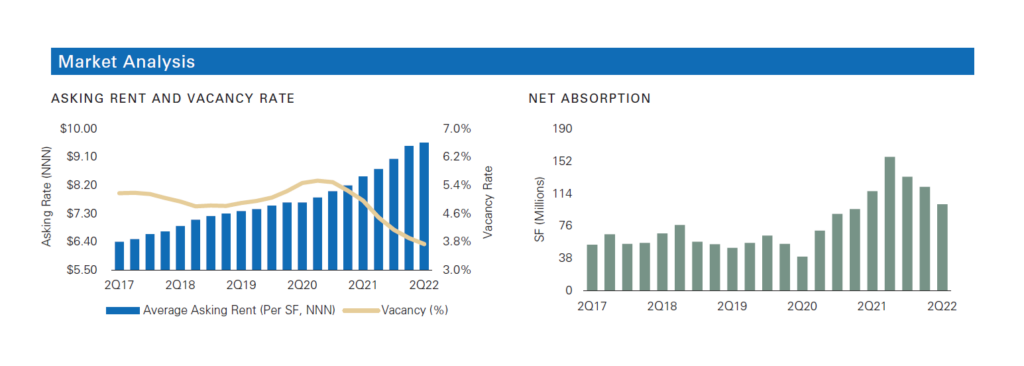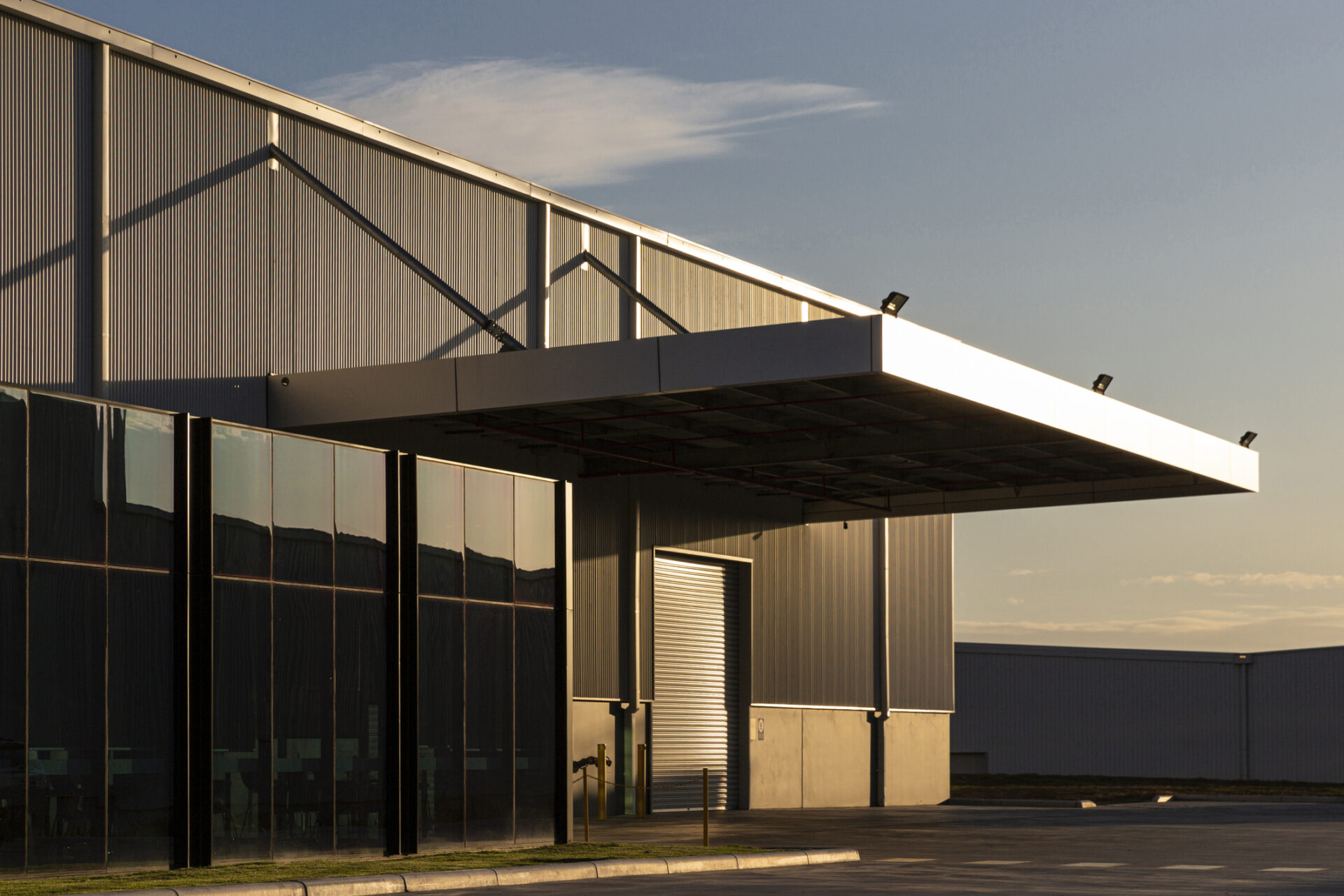(August 2022) – Inflation rising to a 40-year high has been at the forefront of business news this year. Consumers have felt inflationary pressures in their ability to purchase desired items; retailers and e-commerce companies have reported this pressure, which has been called out in several earnings reports. The Federal Reserve Bank’s reaction to fight inflation has been aggressive rate hikes to tame an overheated economy. Debt and equity sources have responded in various ways, but ultimately, uncertainty has set in. Sorting through a few key variables will provide reassurance that the industrial real estate market will continue its robust performance as an investment alternative.
Tenant Demand. Various drivers are impacting users of industrial space. Second-quarter data suggests tenant demand has yet to slow as record amounts of space have been absorbed in markets across the country. Newmark has tracked over 223.1 million square feet of total net absorption during the first half of 2022 across 49 select markets.
Supply Chain Issues. Users continue to confirm the need for safety stock and manage additional factors along the supply chain. Safety stock (the excess buffer between forecasted and actual demand) levels are not where they should be, primarily due to supply chain problems. As inventory levels rise, we notice less demand for older products, causing influxes of new products and safety stock to compete for limited warehouse space. Mixed signals? Yes, but various indicators are pointing toward the need for additional space, even as users are dealing with reduced sales volumes. Prologis has reported that a 5% to 15% increase in inventories in the medium term could result in 270 million to 700 million square feet of additional U.S. industrial absorption.
Near-Shoring, Reshoring, and Onshoring. A critical component of the supply chain includes manufacturing. Control of manufacturing sites and processes will drive additional demand. Relocating manufacturing sites or expanding existing capabilities is a long-term, capital-intensive process. These investments come with downstream impacts of suppliers and warehouses coming in behind for support. Near-shoring to Canada or Mexico, or onshoring to the U.S., provides less supply chain volatility and will act as a stimulant for advanced manufacturing jobs. As an example, Lego decided to offshore in 2006 to lower costs but recently decided to onshore a $1.0-billion, 1.7-million-square-foot factory in Richmond, Virginia. Other significant deals include Panasonic in DeSoto, Kansas; Kubota in Gainesville, Georgia; and Simmons Pet in Edgerton, Kansas. This is something to keep an eye on for many years to come. Secondary markets are poised to benefit due to more substantial population growth, lower real estate costs, and more extensive availability of existing space and
land on which to build. Those markets which can provide a skilled labor force in the increasingly automated advanced manufacturing sector will have a clear advantage in attracting foreign manufacturing investment, domestic expansion, and reshoring.
Capital Markets, Investor, Developer Response. The uncertainty in the current interest rate environment will cause a slowdown in available debt. Active debt brokerage teams expect this will be a short-lived pause and that markets will open up by year-end 2022 or early 2023, as fundamentals remain strong. Investors are seeking higher returns but will be met by sellers who will limit any value reduction as they retain a high conviction in the performance of industrial assets. Industrial warehouse product continued to record the largest amount of appreciation since the pandemic, increasing 63.3% over the past ten quarters, according to NCREIF’s Appreciation Index (1Q22 Newmark Capital Markets Report). Increased cost of debt and changing investor sentiment has caused a 100 to 200 Basis Point increase in cap rates, and values have reduced accordingly.
Demand and construction costs have pushed rents by record amounts. The top 49 U.S. industrial markets tracked by Newmark have seen a 12.7% average increase in asking rental rates year-over-year (2Q21 to 2Q22), and the top 24 Class A industrial markets tracked by Newmark have seen an 18.6% increase in asking rental rates year-over-year (2Q21 to 2Q22) – both of which have helped sustain industrial values. Developers are constructing a record number of buildings: 613.1 million square feet, which is 68.0 million square feet more than the pipeline during the first quarter of 2022. Absorption of this space in light of these challenging conditions will be key for continued strength in the industrial market.
Reason for concern? Yes. All of this product needs to be absorbed to keep the cycle moving. The businesses taking this space are all dealing with the issues as mentioned above, which is cause for concern. While the risk is omnipresent, consumer behaviors will also demand timely and efficient delivery of goods. This changing environment will lead to continuous demand for industrial space, even if there may be a hiccup or two along the way.

Written by: Mark C. Long, President and CEO; Hugh Riley, Associate; John Faur, Associate

